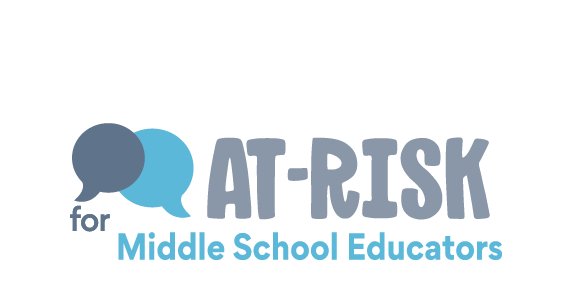

JACKIE: As educators, we hope that we never have a student who is struggling with suicidal thoughts. But suicide is the second leading cause of death for children aged 10-14.
So it’s crucial that we’re prepared to have this tough conversation with our students in order to connect them to help.
Let’s take a look at the warning signs for suicide.
The presence of more than one of the following warning signs may increase a youth’s risk for engaging in suicidal behaviors in the near future:
Suicide is often preventable. If you fear that a student is considering suicide, talk to him or her immediately and be direct. Asking about suicide will not put the idea into a student’s head.
Gather as much information as the student is willing to share, such as:
Then: Connect the student immediately and in person to a supportive counselor, staff member, local service provider, or crisis center. If you have questions on how to handle a particular situation and you cannot reach anyone in your school administration, you can call The National Suicide Prevention Lifeline at 1-800-273-TALK (8522) 24 hours a day, seven days a week.
We became educators to make a difference. We do that every day in the classroom; but, as we teach, sometimes we notice students who are struggling with things outside the classroom, and that’s another opportunity to have an impact. Taking time to notice a student’s behavior, reach out, and make a referral to the counselor might bring hope to the student’s life, help them perform better academically, prevent the escalation of psychological distress, or just let them know someone cares. The conversation you have with a student can open the door to them getting the help they need. If you do this for just one student, you will have made a difference.
After reaching out to a student, follow up in the coming days, weeks, and months to see if things are improving. These don’t have to be long conversations. Even a quick question like “How’s everything going?” lets them know you’re still thinking about them.
And, remember, you’re not alone. If you’re unsure how to handle a particular situation, you can go to your school counselor, the principal, or a colleague for advice. In an emergency, you can call school security, 911, or the National Suicide Prevention Lifeline. And, if you ever realize that a friend, family member, or you yourself may be at-risk, you can call the Lifeline or seek a referral for a mental health professional from your doctor or someone you trust.
We covered a lot today. Next, visit your Resources section, which has local information and a printable summary, which is a great refresher on everything we’ve talked about. Then take a short survey to leave feedback and receive your certificate of completion.
Thank you for the time you put into the classroom and into your students. When you connect with students, you’re doing your part in helping our students and schools achieve their best.
This concludes the simulation At-Risk Middle School. Thank you for learning how to support middle school children exhibiting signs of psychological distress. Please click the link below to request a certificate of completion.
The National Suicide Prevention Lifelife
1-800-273-TALK (8255)
En español oprima el 2
suicidepreventionlifeline.org »
Suicide Prevention Resource Center
SPRC has information for teachers on recognizing and responding to warning signs.
sprc.org »
Help Guide
Helpguide has information on the signs/symptoms and effects of teens depression, as well as information on how to talk to a depressed teen.
helpguide.org »
StopBullying.gov
StopBullying.gov provides information from government agencies on what bullying is, what cyberbullying is, who is at risk, and how you can prevent and respond to bullying.
stopbullying.gov »